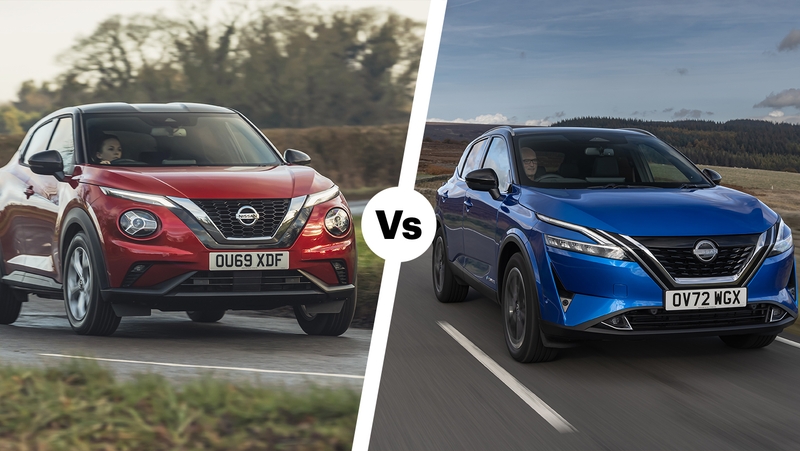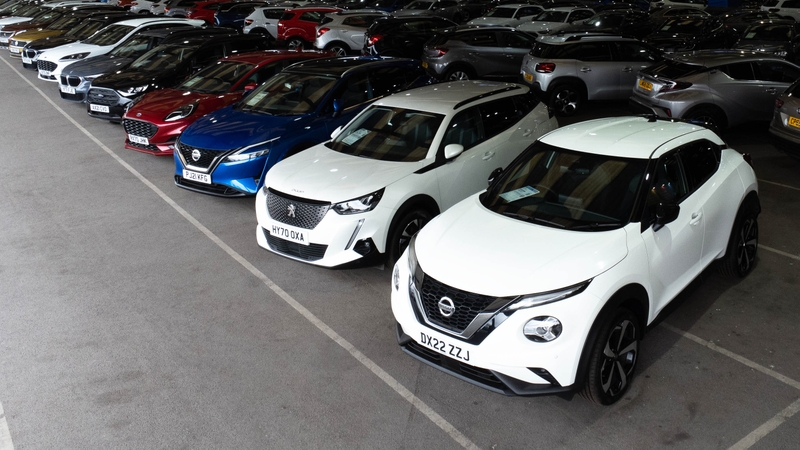















Nissan Juke Review
The latest Nissan Juke is more accomplished than the first-generation car, but struggles to stand out against a huge number of rivals.
However, the introduction of a hybrid engine and, now, a larger touchscreen have made a big difference to the Juke, giving it a more modern feel.
- Funky styling
- Good rear-seat space
- Slick manual gearbox
- Fuzzy screen on most cars
- Feels cheap in back seats
- Slightly firm ride
Should I buy a Nissan Juke?
Even if you know very little about cars, you could probably recognise a Nissan Juke. This quirky car has stood out ever since it was first launched, and quickly became one of the small SUVs to beat.
But, as more and more rivals emerge to steal some of the Juke’s pie, Nissan’s effort has to rely on more than its styling to sell. It’s not quite as fun to drive as a Ford Puma, not as efficient as the Toyota Yaris Cross, not as comfortable as the Citroen C3 Aircross and it doesn’t have the interior quality of a Peugeot 2008.
Despite this, it covers all the main bases fairly well, so test drive the Juke in isolation and you’ll find a lot of good things about it. It’s certainly not a case of all style and no substance.
What’s more, the Juke is fantastically affordable if you’re happy to look at a car that’s a couple of years old – you’ll easily find well-specced examples for under £200 per month. Compared to the rivals we just mentioned, the Juke almost always comes out on top in terms of value for money. It’s built in Britain, too.
In mid-2024, the Juke was treated to a thorough refresh, with a huge new touchscreen that’s vastly improved and upgraded interior materials. You’ll struggle to spot the updates from the outside – it looks the same as before, bar a jazzy new yellow paint colour – but the bigger touchscreen is the main giveaway.
Interior and technology
The interior of the Juke is a bit of a mixed bag, with quality-feeling materials and switchgear butting up against some cheaper plastics. On the whole, it’s probably a little better than the SEAT Arona and Vauxhall Mokka – unless you’re swapping to a Juke from something like an Audi Q2, you’ll probably find the quality good enough.
Similarly, Nissan’s eight-inch touchscreen looks modern perched on top of the dashboard, and includes all the essential phone connectivity features, but it’s not our favourite infotainment system to use. The graphics look dated and some of the icons are small while, in some lights, glare can make the screen unreadable. The 12.3-inch replacement is much crisper and more responsive.
Entry-level Visia models miss out on the touchscreen altogether, but LED headlights, cruise control and lane-keeping assist all come as standard.

Practicality
Thankfully, the current Juke has grown in length and width compared to its predecessor, so it’s now just as practical as many of its nearest rivals. There’s a surprisingly good amount of rear legroom, and headroom is also much better than you might expect given its sloping roofline. Adults shouldn’t feel too cramped in the back of a Juke, even if the side windows are quite small.
The boot is also a good size at 422 litres, which is pretty well matched to all its closest competitors. That’s with the false floor taken out, but you can set it in a higher position to create a flat loadbay when the rear seats are folded. Having this false floor in place with the rear seats up does reduce the size of the boot quite a lot, although you can still use the space underneath to store valuables out of sight.

Engines and performance
Small turbocharged petrol engines are found in pretty much every small SUV, and it’s no different in the Juke. A 1.0-litre three-cylinder engine produces 114hp and gets the Juke from 0-62mph in a respectable 10.7 seconds. It’s no rocketship but feels perfectly quick enough for most day-to-day driving scenarios.
In 2022, Nissan added a hybrid engine, consisting of a 1.6-litre petrol engine that works alongside a 1.2kWh battery and an electric motor. Nissan suggests that the electric motor can power the car for up to 80% of the time through town, and that you could see 54mpg if you drive carefully – slightly more than the 1.0-litre petrol. The hybrid is a little quicker than the petrol, but you’re unlikely to notice much of a difference in real-world driving.

Driving and comfort
The Juke is good to drive but lacks a bit of sparkle to keep keen drivers interested – but then, few small SUV drivers will be driving like Michael Schumacher while on the way to Tesco. A Puma is more fun but many SUVs aren’t as talented as the Juke is.
The flipside of the relatively sporty setup is that the ride is a bit firm. At low speeds, even cars with smaller 17-inch wheels are a little firm over bumps, and the largest available 19-inch wheels on Tekna models don’t do anything to improve the ride. A Citroen C3 Aircross or Volkswagen T-Cross will filter out bumps a little better than the Juke.






































































